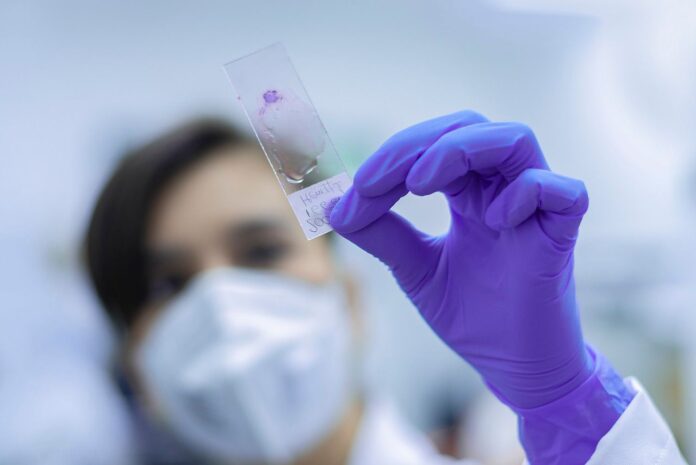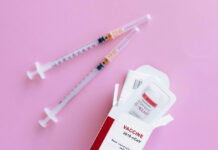Many scientists are now wondering how TB-500 and BPC-157 compare in light of recent advances in peptide studies. The supposed research properties of these peptides are the subject of intensive investigation in various animal organs and tissues. Among the many hypothesized potential hypotheses of TB-500 and BPC-157 in research studies are:
- Possible healing of connective tissues
- Possible increase in contractile force
- Possible wound closure
- Possible intestinal repair
- Possible decrease in inflammation
Following an analysis of their presentation in previous studies, our specialized experts will detail the research applications and potential of TB-500 and BPC-157. We will also provide information on the best places to get research peptides from trustworthy sellers, such as Biotech Peptides.
BPC-157 Peptide: What is it?
The synthetic pentadecapeptide BPC-157, also known as Body Protection Compound 157, was created in the early 1990s. While BPC-157 has a gastric protein origin, it has no recognized similarity with stomach peptides, as stated by Sikiric et al. The scientific literature refers to BPC-157, patented in 1998, as well as PL 14736, PL-10, and Bepecin.
Studies suggest that BPC-157 may have a long half-life in stomach acid (more than 24 hours) and a moderate half-life in plasma (up to 4 hours), and it may remain detectable in urine for four days after being expelled from the organism. While some publications have mentioned a phase 1 study on BPC-157 as an anti-ulcerative agent in IBD research models, most of the research on this pentadecapeptide has been conducted in vitro or on animals. No full-text clinical trials have been published using this compound. From what researchers can tell from the preclinical studies, the peptide might work in a few different ways:
- It may promote angiogenesis and help heal diverse tissues by interacting with growth factors like VEFG and EGR-1.
- It may enhance nitric oxide production, activating fibroblasts to promote the regeneration of connective and vascular tissues.
- BPC-157 may accelerate tendon fibroblast migration and dissemination.
- Gastrointestinal dysregulation may be aided by its interaction with the alpha-adrenergic and dopaminergic systems.
- Potential neuroprotective action and cognitive function might result from upregulating serotonin signaling.
TB-500 Peptide: What is it?
Thymosin beta-4 (TB4) is a naturally occurring protein in almost all cells; TB-500 is its synthetic analog. Bovine thymus gland extract was the first source of thymosin beta-4, originally identified in 1981. Several potential actions of the peptide are now the subject of active scientific investigation:
- Possible use in migrating cells and mending damaged tissues
- Possible use in new blood vessel formation
- Possible use in stem cell maturation
- Possible use in different cell types’ ability to survive
- Possible use in lowering inflammatory levels
Research usually evaluates TB-500 formulations in animal research models due to a limited oral absorption capacity. However, the active TB4 fragment Ac-SDKP containing the sequence N-acetyl ser-asp-lys-pro is now being studied for its possible impact.
TB-500 vs. BPC-157: The Musculoskeletal System
Animal studies have investigated the possibility of TB-500 and BPC-157 repairing musculoskeletal injuries. Crushed muscles, disconnected tendons, and bone deformities are only some of the musculoskeletal problems that BPC-157 has been suggested to aid recovery in several studies:
- Because of the peptide’s angiogenic potential, BPC-157 has been speculated to promote healing in animal models of crushed muscles.
- In rat models of Achilles tendon separation, BPC-157 has been hypothesized to accelerate tendon-to-bone repair, leading to a quicker functional recovery. Also, when methylprednisolone and the peptide were given together, the latter did not appear to have the detrimental impact on healing the former had.
- According to one study, BPC-157 given to a rabbit’s defect seems to hasten the repair of delayed bone mending. The peptide’s efficacy appeared similar to that of a bone graft.
TB-500 vs. BPC-157: Wounds and Injuries
Skin ulcers, corneal abrasions, and recovering from gastrointestinal lesions are just a few of the wound healing research avenues through which TB-500 and BPC-157 have been extensively studied. Two noteworthy experimental studies evaluating the wound-healing capacity of TB-500 (synthetic TB4) are:
- Synthetic TB4 was presented to research models of venous stasis ulcers for 84 days in a randomized, double-blind, placebo-controlled trial with concentration escalation. The findings implied that compared to placebo, TB4 appeared to significantly reduce median healing by 45% in research models whose wounds completely healed.
In a 56-day phase-2 study, nine research models of dry eye syndrome were given either a placebo or synthetic TB4 eye drops for 28 days and observed for another 28 days. Six research models who received TB4 seemed to have less overall corneal fluorescein staining and 35.1% less perceptible pain than the control group.







